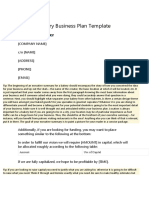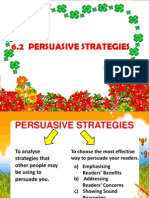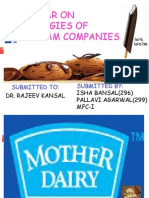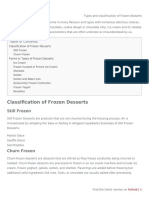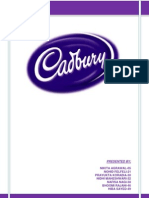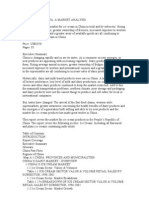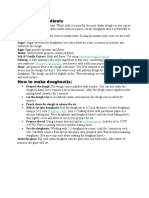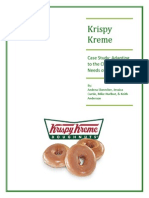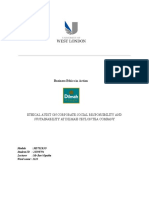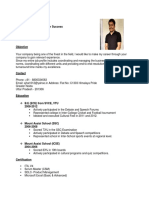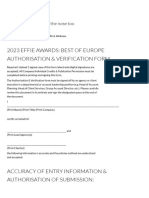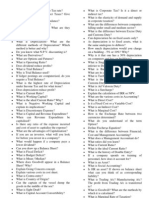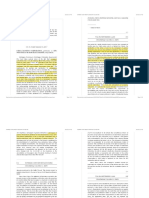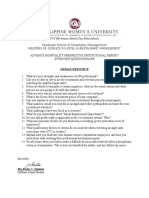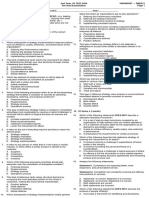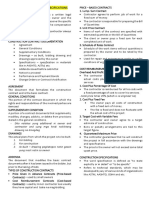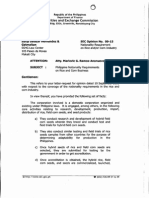Marketing Management of Biscuits - Business Studies Project - Reader Mode
Marketing Management of Biscuits - Business Studies Project - Reader Mode
Uploaded by
Ritik TanwarCopyright:
Available Formats
Marketing Management of Biscuits - Business Studies Project - Reader Mode
Marketing Management of Biscuits - Business Studies Project - Reader Mode
Uploaded by
Ritik TanwarCopyright
Available Formats
Share this document
Did you find this document useful?
Is this content inappropriate?
Copyright:
Available Formats
Marketing Management of Biscuits - Business Studies Project - Reader Mode
Marketing Management of Biscuits - Business Studies Project - Reader Mode
Uploaded by
Ritik TanwarCopyright:
Available Formats
Customize appearance
Marketing Management Of Biscuits - Business
Studies Project
INTRODUCTION
“Biscuit” covers a wide range of avour baked products, though it is
generally an unleavened cake or bread, crisp and dry, and in a small, thin,
and at shape. It has several cultural meanings. In the united states, a
biscuit is a soft, thick scone product or a small roll similar to a mu n.
The British biscuit is equivalent to the American cookie and crackers.
These latter terms are relatively modern. “Cookie” comes from the
eighteen-century Dutch word koekje, diminutive of koek (cake). “cracker”
is a North American term that also came into use in the eighteen
century, connoting the sound of water as it was chewed or broken (at
this time; cracker” was also used to mean a recracker or noisy person
or object) Biscuit have evolved from different aspects of baking
practices such as tarts, pastries, shortcake, and sugar confectionery.
MARKETING MANAGEMENT
Marketing management is the directing of organization resources to
develop and implement the best possible strategy to reach its desired
consumer segment to maximize sales of a particular product or service.
5 MARKETING MANAGEMENT CONCEPTS
PRODUCTION CONCEPT
The production concept is used when demand for a product is higher
than its supply. The philosophy here is that “ supply creates its
demand.”Therefore, the focus is on manufacturing more products to
make sure it’s widely available.
PRODUCT CONCEPT
Contrary to the production concept, this concept assumes consumers
value products of a higher quality as opposed to price and availability.
Therefore the focus is more on quality and less on quantity. The
product concept is that if you’re selling a product of great quality,
minimal marketing will be required to sell it.
SELLING CONCEPT
Where the production and product concepts focus on manufacturing,
the selling concept focuses on the making of an actual sale. The
number one focus for the manager is to make money no matter the
quality needs to consumers supply, on-demand. Because of this, the
selling concept entails very aggressive marketing.
MARKETING CONCEPT
The marketing concept works on the philosophy that consumers buy
products that ful l their needs. A manager that takes the marketing
approach will conduct extensive market research to determine the
needs of consumers and how to ful l them better than its
competitors.
SOCIETAL CONCEPT
Marketing managers with this approach are also concerned about the
well-being of society and feel a responsibility to tend to the world
around them. The societal concept creates a balance of social and
environmental welfare, customer, relationships, and sales.
4Ps
PRODUCT
The product is either a tangible good or an intangible service that seems
to meet a speci c customer’s need or demand. All products follow a
logical product life cycle and marketers need to understand and plan for
the various stages and their unique challenges. It is key to understand
those problems that the product is attempting to solve. The bene ts
offered by the product and all its features need to be understood and the
unique selling proposition of the product needs to be studied. In
addition, the potential buyers of the product need to be identi ed and
understood.
PRICE
Price covers the actual amount the end-user is expected to pay for a
product. How a product is priced will directly affect how it sells. This is
linked to what the perceived value of the product is to the customer
rather than an objective casting of the product on offer. If a product is
priced higher or lower than its perceived value, then it will not sell. This is
why it is imperative to understand how a customer sees what you
selling. If there is a positive customer value then a product may be
successfully priced higher than its objective monetary value in the eyes
of the consumer, then it may need to be underpriced to sell. Price may
also be affected by distribution plans value chain costs and mark-ups
and how competitors price a rival product.
PROMOTION
The marketing communication strategies and techniques all fall under
the promotion heading these may include advertising, sales promotion,
special offers, and public relations. Whatever the channel used, it must
be suitable for the product, the price, and the end-user it is being
marketed to. It is important to differentiate between marketing and
promotion. Promotion is just the communication aspect of the entire
marketing function.
PLACE
Place or placement has to do with how the product will be provided to
the customer. Distribution is a key element of placement. The placement
strategy will help assess what channel is the most suited to a product.
How a product is accused
WHY DID I CHOOSE BISCUITS?
Biscuits are consumed throughout the world for their nutritional values
and also can be stored for longer durations. Biscuit manufacturing is a
major processed food sector. Biscuits are available in a wide range of
shapes, llings, colours, and toppings and are hence accepted by
consumers of all age groups. Major and minor ingredients used during
the manufacturing of biscuits play an important role and the chemistry
behind them must be well understood by biscuit manufacturers to
maintain quality and avoid batch variations. The method of
manufacturing used nowadays is either a fully automated or semi-
automated plant in the organized sector but it is fully dependent on
humans in the unorganized sector. Apart from the method of
manufacturing, packaging also plays multiple roles, that safeguard the
product from contamination and attract the consumer.
COMPETITORS
OREO BISCUIT
The “Oreo Biscuit” was rst developed and produced by the National
Biscuit Company (today known as Nabisco) in 1912 at its Chelsea,
Manhattan factory in the current-day Chelsea market complex, located
th th
on Ninth Avenue between 15 and 16 streets. Oreo is a sandwich
cookie consisting of two (usually chocolate) wafers, with sweet cream
lling. Introduced in 1912, Oreo is the best-selling cookie brand in the
united states. As of 2018, the version sold in the U.S is made by the
Nabisco division of Mondelez International. Oreo cookies are available in
over one hundred countries. In some countries, such as the united
kingdom, they are referred to as Oreo biscuits. Many varieties of Oreo
cookies have been produced and limited-edition runs have become
st
popular in the 21 century.
MARIE GOLD
A Marie biscuit is a type of biscuit similar to a rich tea biscuit. It is also
known as Maria, Marion, Map, and Marietta, amongst other names. The
biscuit is round and usually has the name embossed upon its top
surface, the edge of which is also embossed with an intricate design. It
is made with wheat our, sugar, palm oil, or sun ower seed oil and unlike
the rich tea biscuit, is typically vanilla avoured. The Marie biscuit was
created by the London bakery peek Freans in 1814 to commemorate the
marriage of the Grand Duchess Maria Alexandrovna of Russia to Duke
Edinburgh.
Tagline/slogan Tea time Mein Jan daal de
USP Healthy tea time biscuit
BOURBON BISCUIT
The Bourbon biscuit is a sandwich style biscuit consisting of two thin
rectangular dark chocolate avoured biscuits with a chocolate
buttercream lling. The biscuit was introduced in 1910( originally under
the name “Creola” ) by the biscuit company peek fans, of Bermondsey,
London, the originator of the Garibaldi biscuit. The Bourbon name dating
from the 1930s comes from the farmer French royal house of Bourbon a
2009 survey found that the Bourbon biscuit is the fth most popular
biscuit in the united kingdom for dunking into tea these biscuits are also
popular in India. The small holes in bourbon biscuits are to prevent the
biscuits from cracking or breaking during the baking process, by
allowing steam to escape.
Tagline Andar se kuch, bahar se kuch
USP thick, rich, and delicious chocolate packed between two
crunchy chocolate biscuits.
PARLE-G
Parle-G is a brand of biscuits manufactured by parle products in India. A
2011 Nelson survey reported it is the best-selling brand of biscuits in the
world. Parle products were established as a confectionery maker in the
vile parle suburb of Mumbai, in 1929. Parle products began
manufacturing biscuits in 1939. In 1947, when India became
independent, the company launched an ad campaign, showcasing its
Gulco brand of biscuits as an Indian alternative to British branded
biscuits primarily eaten as a tea time snack, Parle-G is one of the oldest
brand names in India.
Tagline G means Genius, Aao Banaye Kal ke Genius
USP India’s most trusted top of the mind brand
GOOD-DAY
Britannia Industries Limited is an Indian food and beverage company.
Founded in 1892 and headquartered in Kolkata, it is one of India’s oldest
existing companies. It is now part of the Wadia Group headed by Nusli
Wadia. The company sells its Britannia and Tiger brands of biscuits,
bread and dairy products throughout India and in more than 60 countries
across the world Beginning with the circumstances of its takeover by the
Wadia group in the several controversies connected to its management.
Tagline Iska toh Gaya Re Good Day
USP Healthy biscuits with cashew and butter
MY PRODUCT
NAME: CHOCO SNACK
LOGO: ILLUSTRATED BELOW
TAGLINE: for your love sweetness
USP: A perfect combination of sweer avours of tutty fruity and
chocolate.
LABELLING
The display of information about a product on its container, packaging,
or the product itself is known as labelling. For several types of consumer
and industrial products, the type and extended information that must be
impacted by a label are governed by the relevant safety and shipping
laws.
Six qualities of a label design
The right material
Colours that POP
Great Graphics
Readable, eye-catching fonts
Supershape
Fabulous nish
GRADING
Grading is the process of sorting individual units of a product into well-
de ned classes or grades of quality. The goods are graded or sorted out
into different lots by the speci ed standards. The established standard
lays down the grades of the product. In the case of manufactured goods,
goods can be of uniform quality. But agricultural products like fruits and
vegetables, etc, vary in quality, therefore, classes or grades of quality are
set and different units of the product are stored into the established
standard grades thus, grading involves the division of products into
classes made up of units possessing similar characteristics of size and
quality and standardization to refer to the process of setting up basic
measures or standards to which the product must conform and taking
steps to ensure that the good produced adhere to these standards.
Standards re ect desirable features of a product in terms of its design,
weight, colour, etc.
PACKAGING
Packaging refers to the act of designing and producing the container or
wrapper of a product. Levels of packaging. It plays a very signi cant role
in the marketing success or failure of many products, especially non-
durable consumer products. These areas are below
PRIMARY PACKAGE
it refers to the product & immediate containers. In some cases, the
primary package is kept till the consumer is ready to use the product
SECONDARY PACKAGING
It is the additional packing given to a product to protect it such
packing is retained till the consumer wants to start using the product.
TRANSPORTATION PACKAGING
It refers to packages essential for storing identifying or transporting,
for example, the use of corrugated boxes, wooden crates, etc.
CHANNELS OF DISTRIBUTION
The distribution channel is a chain of business or intermediaries through
which a good or service passes until it reaches the end consumers. It
can include wholesalers, retailers, distribution, and even the internet
itself. Channels are broken into direct and indirect forms, with a “direct”
channel allowing the consumer to buy the good from a wholesaler or
retailer. The rst channel is the longest in that it includes all four, from
producer to the consumer the wine and adult beverage industry is a
perfect example of this long distribution channel. It operates in what is
known as the three-tier system meaning the winery is required by law to
rst sell its product to a wholesaler, who then sells to a retailer the
retailer, in turn, sells that product to the end consumer the second
channel is one where the producer sells directly to a retailer who then
sells the producer’s product to the end consumer. This means the
second channel contains only one intermediary. The third and nal
channel is direct to consumer model where the producer sells its
product directly to the end consumer.
SWOT ANALYSIS
SWOT analysis is an analysis framework used to evaluate a company’s
competitive position. It’s a tool that identi es the strength, weaknesses,
opportunities & threats of a business.
STRENGTH
they describe what an organization excels at & separate it from the
competition. Things like a strong brand, loyal customer base, strong
balance sheet, unique technology, and so on.
WEAKNESSES
It stops an organization from performing at its optimum level. They are
areas where the business needs to improve to remain competitive things
as higher than industry average turnover, high level of debt, an
inadequate supply chain, or lack of capital.
OPPORTUNITIES
It refers to favourable external factors that an organization can use to
give it competitive advantages.
THREATS
It refers to factors that have the potential to harm an organization
PERMISSION & LICENSES
FOOD SAFETY AND STANDARDS AUTHORITY OF INDIA (FSSAI)
The food safety and Standards Authority of India (FSSAI) is an
autonomous body established under the ministry of health & family
welfare Government of India. The FSSAI has been established under
the food safety and standards act, 2006 which is consolidating
statutes related to food safety and regulation in India FSSAI is
responsible for protecting and promoting public health through the
regulation and supervision of food safety.
INDIAN STANDARDS INSTITUTE/ BUREAU OF INDIAN STANDARD
CERTIFICATION
The Bureau of Indian Standards (BIS) is the national standards body
of India working under the aegis of the ministry of consumer affairs
food & public distribution government of India. It is established by the
Bureau of Indian Standards Act, 1986 which came into effect on 23 rd
December 1986. The minister in charge of the ministry or department
has administrative control of the BIS the ex-o ce president of the
BIS. The organization was formerly the Indian Standards Institution
(ISI) set up under the Resolution of the department of Industries and
supplies NI.1 std (4) 45, dated 3 September 1946. The ISI was
registered under the Society’s registration act, 1860.
AGMARK CERTIFICATION
AGMARK is a certi cation mark employed on agricultural products in
India, assuring that they conform to a set of standards approved by
the Directorate of Marketing and inspection and attached o ce of the
department of agriculture (operation and farmers welfare under the
ministry of agriculture & farmers welfare an agency of the
government of India. The AGMARK head o ce at Faridabad was
enforced in India by the Agricultural produce (grading and marketing)
Act of 1937 (and amended in 1986). The present AGMARK standards
cover quality guidelines for 222 different commodities spanning a
variety of pulses, cereals, essential oils, vegetable oil, fruits and
vegetables, and semi-processed products like vermicelli.
OTHER
Health and trade licenses
Environmental clearance, etc.
BRANDING
The process involved creating a unique name and image of a product in
the consumer’s mind, mainly through advertising campaigns with a
consistent theme. It aims to establish a signi cant and differentiated
presence in the market that attracts and retains loyal customers.
Branding promotes recognition
A brand sets us apart from the competition
Branding sets expectations
A strong brand adds value
WAREHOUSING
Warehousing is a key component of the overall business supply chain.
The supply chain consists of the facilities and distribution options for
the procurement of materials from the manufacturer to the customer
and all points in between including the production of materials into
components and nished products and then the distribution to
customers. The economic bene ts of consolidation and break-bulk are
to reduce transportation costs by using warehouse capability to increase
shipment economics of scale. The storage housing would be a
centralized system for our product. It would act as a master storage
zone. There would be smaller storage houses as per the regions. This
smaller storage house will directly report to the centralized storage
house. The smaller storage house would be responsible for distributing
to all the major whole sellers and retailers in the speci c regions.
TRANSPORTATION
Weekly orders would be dispatched for local retailers and shop owners
from the centralized distribution centre while monthly stock would be
updated at the centralized stock centre. Depending upon the location
quantity and availability, a mode of transportation would be selected.
SOCIAL MESSAGE
We’ll use original cocoa to manufacture our product for the bene t of
the society no arti cial chocolate avourings will be added
An adequate percentage of our pro t will be donated to physically
disabled people.
Every year some of the biscuit packs will be distributed to orphanages
for free.
All employees’ temperatures will be checked daily before entering the
work premises. All the equipment’s machines and factory area will be
sanitized twice a day.
It will be compulsory to wear masks. Face shields and gloves for all
the employees.
The packaging will be made of recycled paper instead of plastic.
PROMOTIONAL SCHEME
A supersaver pack of 1 kg, 500 gm
Free stickers for kids along with a biscuit pack
Complete gift packings/special festival packs
Gift coupons and value points for discounts
Young celebrity endorsement
Free sample of 10 gm for initial promotion
Masks will be distributed with our logo for promotion as well as
societal welfare
Covid-19 awareness camps will be organized in various societies and
residential areas
Online sessions will be organized for kids and their parents to provide
tips for good health followed by a giveaway.
SURVEY QUESTIONS
Queries
Why do you prefer eating biscuits?
Timepass
Snacks
When hungry
Any other
Which brand of biscuits do you like to eat?
Britannia
Nutra choice
Marie
Sun feast
Any other
Which brand of biscuits do you like to eat more?
Britannia
Nutra choice
Marie
Sun feast
Any other
Which biscuits are best according to you?
Britannia
Nutra choice
Mc votes
Marie
Sun feast
Any other
How many times a day do you eat biscuits?
Once
Twice
Thrice
More than 3 times
Who all from your family eat biscuits?
All
Father
Mother
Children
Any other
Which biscuits is your family favourite?
Oreo
Dairy milk
Parle
Bournville
Any other
Which biscuits do you prefer for your dog?
Pedigree
Fruit tables
Lucky dog
Mini naturals
Any other
What nutritional facts do you look for while purchasing biscuits?
Energy
Protein
Fibre
Carbohydrates
Calcium
Iron
Trans fat
Fat
Any other
Which biscuit do you like?
Choco biscuits
Cream biscuits
Bun biscuits
Where you will buy biscuits?
Food courts
Supermarket
Bakers
Any other
Which biscuit do you prefer to give your children or anyone for
breakfast?
Oreo
Dairy milk
Parle
Bournville
Any other
Which brand of biscuits do you eat?
Britannia
Mc votes
Nutra choice
Marie
Sun feast
Any other
How will eat you your biscuits?
With milk
With coffee
With tea
Any other
Have you seen a manufacturer of biscuits any time?
Yes
No
Do you have a habit of preparing biscuits at home?
Yes
No
Which type of biscuits do you like?
Salty
Sweet
Sugarless
According to you which sugarless brand biscuit do you like?
Marry light
Sun feast light
Marry gold
Any other
According to you which sweety brand biscuit do you like?
Good day
Marry
Horlicks
Parle
Any other
According to you which salty brand biscuit do you like?
Monaco
Krack jack
50-50
Anu other
According to you which cream biscuits brand do you like?
Oreo
Vega cream
Sun feast
Bourbon
Any other
CONCLUSION
From this marketing research, I have understood the importance of
marketing mix. I have learned to take the decisions regarding the 4PS of
making the following things too
Gathering information and analyzing the market
How to design a product
Branding, labelling, and packaging of the product
Pricing of product
Marketing and promotion of a product, etc.
CERTIFICATE
This is to certify that class —of—-school, has completed his project
under my school supervision. He has taken proper care and shown
utmost sincerity in the completion of this project. I certify that this
project is up to my expectations and as per the guidelines issued by
CBSE.
Teacher’s
Signature
Examiner’s Signature
ACKNOWLEDGEMENT
I would like to express my special thanks of gratitude to my teacher—
well as our principal who gave me the golden opportunity to do this
wonderful project on the topic of Marketing Management which also
helped me in doing a lot of research and I came to know about so many
new things. I am thankful to them. Secondly, I would also like to thank
my parents and friends who helped me a lot in nalizing this project
within the limited time frame.
BIBLIOGRAPHY
INTERNET
You might also like
- D1.1 - 2015-Exam1-50 Questions W Answers PDFDocument22 pagesD1.1 - 2015-Exam1-50 Questions W Answers PDFCalidad Pellizzari100% (4)
- Laduree International Marketing PDFDocument10 pagesLaduree International Marketing PDFRebecca Thompson0% (1)
- Financial Services: Securities Firms and Investment Banks: True / False QuestionsDocument30 pagesFinancial Services: Securities Firms and Investment Banks: True / False Questionslatifa hn100% (1)
- Idea - User GuideDocument159 pagesIdea - User GuideNoor Cano100% (2)
- The Launch of A New Biscuit BrandDocument2 pagesThe Launch of A New Biscuit BrandDharshana Muthtettugoda100% (2)
- Kellogg - New Products From Market ResearchDocument5 pagesKellogg - New Products From Market ResearchAli ShanNo ratings yet
- Taste of The FutureDocument20 pagesTaste of The FutureDeejaHayatNo ratings yet
- Mars (Chocolate Bar)Document9 pagesMars (Chocolate Bar)name2No ratings yet
- Case Wooden BakeryDocument13 pagesCase Wooden BakeryGhiwa ZgheibNo ratings yet
- Marketing-Plan-Gelato-Priyanka Kundu-112193011Document26 pagesMarketing-Plan-Gelato-Priyanka Kundu-112193011PriyankaPoriNo ratings yet
- Cadbury DairymilkDocument37 pagesCadbury DairymilkAnant Kumar ChauhanNo ratings yet
- French Baker 2Document19 pagesFrench Baker 2Eric Luis CabridoNo ratings yet
- AW ApplicationNote ChocolateDocument4 pagesAW ApplicationNote Chocolateulva mohtarNo ratings yet
- Diplome in Patisserie, City & Guilds, LondonDocument6 pagesDiplome in Patisserie, City & Guilds, LondonG3BNo ratings yet
- Mango Sago Sago Pearls, Mango Popping Boba, & Mango JellyDocument1 pageMango Sago Sago Pearls, Mango Popping Boba, & Mango JellyRuby G GirikumarNo ratings yet
- Bakers and Cakes Bakery Products and CompanyDocument21 pagesBakers and Cakes Bakery Products and CompanyUtsav Mahendra50% (2)
- Bakery Business Plan Template With TipsDocument3 pagesBakery Business Plan Template With TipsGODWIN OWUSU YEBOAHNo ratings yet
- Nestle Premium Chocolate Market StrategyDocument2 pagesNestle Premium Chocolate Market Strategyjmisra71No ratings yet
- Cake - WikipediaDocument10 pagesCake - WikipediaglennNo ratings yet
- BREAD Vol5 94 ErrataDocument1 pageBREAD Vol5 94 ErrataDrilon ShkourtiNo ratings yet
- Callebaut Guide To Dark CouvertureDocument4 pagesCallebaut Guide To Dark CouvertureHuai Chien SooNo ratings yet
- Desserts Bakery Business PlanDocument40 pagesDesserts Bakery Business PlanTheresa CastresNo ratings yet
- Krispy Kreme Doughnuts in 2005Document27 pagesKrispy Kreme Doughnuts in 2005Ming Chang50% (2)
- Cadbury MarketingstretegyDocument25 pagesCadbury MarketingstretegyMitali Amagdav100% (1)
- Becketsbestrecipes PuddingsDocument30 pagesBecketsbestrecipes PuddingsbecketsbestNo ratings yet
- Project Report On Ice Cream StabilizerDocument6 pagesProject Report On Ice Cream StabilizerEIRI Board of Consultants and Publishers0% (1)
- Brand Management and Analysis of Bellissimo Premium Ice CreamDocument39 pagesBrand Management and Analysis of Bellissimo Premium Ice CreamSajeed Alam0% (2)
- Title of Case: Sweets Business Who Have Earned Love and Loyalty of Million of Customers. (Nirala Sweets)Document9 pagesTitle of Case: Sweets Business Who Have Earned Love and Loyalty of Million of Customers. (Nirala Sweets)Muhammad Ali Rizwan100% (1)
- Prajitura Cataif Knafe Kunafeh RecipeDocument66 pagesPrajitura Cataif Knafe Kunafeh RecipemoiseelenaNo ratings yet
- Production and Operation Management Finals - Ronnel - Rommel - Chryseler 1Document17 pagesProduction and Operation Management Finals - Ronnel - Rommel - Chryseler 1ronnelNo ratings yet
- Foodnews: AlsianoDocument10 pagesFoodnews: AlsianoDeniseNo ratings yet
- Leaflet Chocolate Couv Milk PDFDocument2 pagesLeaflet Chocolate Couv Milk PDFGeorgios SpandosNo ratings yet
- Futurpreneur Bakery ExampleDocument14 pagesFuturpreneur Bakery Examplesimonebandrawala9No ratings yet
- Ice Cream Cost Benefit AnalysisDocument12 pagesIce Cream Cost Benefit AnalysischarlotteNo ratings yet
- Oum English PresentationDocument32 pagesOum English PresentationVesvan VeerappanNo ratings yet
- Red Velvet Cake With Cream Cheese Frosting - Sally's Baking AddictionDocument3 pagesRed Velvet Cake With Cream Cheese Frosting - Sally's Baking Addictionhaifa_eva97100% (1)
- Seminar On Strategies of Ice Cream CompaniesDocument45 pagesSeminar On Strategies of Ice Cream CompaniesPallavi100% (1)
- Introduction To French MacaronsDocument4 pagesIntroduction To French MacaronsKenesei György0% (1)
- Sample Marketing Plan For Suger Free Choclates PDFDocument23 pagesSample Marketing Plan For Suger Free Choclates PDFVivek Kumar0% (1)
- Types and Classification of Frozen DessertsDocument3 pagesTypes and Classification of Frozen DessertsFarhan Kazi100% (1)
- Milky Way BakeryDocument31 pagesMilky Way BakeryTrâm Phạm100% (1)
- Business Plan: Emilia's Chocolate Factory"Document7 pagesBusiness Plan: Emilia's Chocolate Factory"Popa EmiliaNo ratings yet
- Managing Heritage Brands PDFDocument8 pagesManaging Heritage Brands PDFStephane BorrazNo ratings yet
- Toffee Food TechnologyDocument19 pagesToffee Food TechnologyNgọc DungNo ratings yet
- CadburyDocument16 pagesCadburyShekhar BaidNo ratings yet
- Doughnut MakerDocument4 pagesDoughnut MakerAaron TnNo ratings yet
- Soft Nougat Concept March12 V2Document1 pageSoft Nougat Concept March12 V2Shofwatur RohmanNo ratings yet
- Ice Cream in ChinaDocument6 pagesIce Cream in ChinaAbdul NaveedNo ratings yet
- Doughnut Ingredients: Homemade Vanilla Extract Chocolate Chip MuffinsDocument14 pagesDoughnut Ingredients: Homemade Vanilla Extract Chocolate Chip MuffinsEllize JarillaNo ratings yet
- Biscuit - ReportDocument21 pagesBiscuit - ReportSaurav KumarNo ratings yet
- Busi PlanDocument23 pagesBusi Planshamikshaa eswaranNo ratings yet
- Elsa's Story - Cookie Collection CatalogDocument18 pagesElsa's Story - Cookie Collection CatalogIsrael ExporterNo ratings yet
- Haagen-Dazs Emtry in China - Marketing ResearchDocument10 pagesHaagen-Dazs Emtry in China - Marketing ResearchAbhayjeet SinghNo ratings yet
- Competitive Business Management - A Global PerspectiveDocument228 pagesCompetitive Business Management - A Global PerspectiveRaghav RishiNo ratings yet
- Challenges and Success: Managed To Gave inDocument2 pagesChallenges and Success: Managed To Gave inMari Carmen Pérez GómezNo ratings yet
- BakeParlor Marketing AnalysisDocument13 pagesBakeParlor Marketing AnalysisShakir MuhammadNo ratings yet
- Bakery & Patisserie Theory - I - 24.11.2016Document2 pagesBakery & Patisserie Theory - I - 24.11.2016Kumar SatyamNo ratings yet
- Krispy Kreme PDFDocument37 pagesKrispy Kreme PDFauliazahrinaNo ratings yet
- Sample BCSP 64Document14 pagesSample BCSP 64Gaming Anime & MoreNo ratings yet
- JD - Strategy Manager - YES BANKDocument2 pagesJD - Strategy Manager - YES BANKaakash urangapuliNo ratings yet
- Customer Service Process 2Document6 pagesCustomer Service Process 2Thùy DungNo ratings yet
- Marketing Chapter 8Document19 pagesMarketing Chapter 8decemaefuentes0801No ratings yet
- A Study On Consumer Perception and Buying Behaviour Towards Beauty Care Products at Mehsana City - OctoberDocument3 pagesA Study On Consumer Perception and Buying Behaviour Towards Beauty Care Products at Mehsana City - OctoberJaisudhan sivakumarNo ratings yet
- (RO) MS7SL82O - 21598794 - Ethical AuditDocument21 pages(RO) MS7SL82O - 21598794 - Ethical AuditKrishan hunukumburaNo ratings yet
- Sheet Metal Design Guidelines - Design For ManufacturingDocument13 pagesSheet Metal Design Guidelines - Design For ManufacturingShashank Maheshwari100% (1)
- Chap 9 - Proof of Cash Fin Acct 1 - Barter Summary Team PDFDocument7 pagesChap 9 - Proof of Cash Fin Acct 1 - Barter Summary Team PDFCarl James Austria100% (1)
- Jordan 4 - Google SearchDocument1 pageJordan 4 - Google Search5p88j4w2drNo ratings yet
- Troubleshooting GuideDocument318 pagesTroubleshooting Guideapi-3731900100% (3)
- Abhinav Kumar Jha Group Manager - Customer Success ExperienceDocument5 pagesAbhinav Kumar Jha Group Manager - Customer Success Experienceunique cafeNo ratings yet
- Lease AccountingDocument19 pagesLease Accountinggregory george0% (1)
- Group 1 - 1906295795 - SSMDocument20 pagesGroup 1 - 1906295795 - SSMFitri Yani Rossa SafiraNo ratings yet
- ENTRANT RECORDS - Authorisation & Verification Form E-1043-496-2Document12 pagesENTRANT RECORDS - Authorisation & Verification Form E-1043-496-2Jakov VilovicNo ratings yet
- Interview Questions CommerceDocument1 pageInterview Questions CommerceManoj KNo ratings yet
- Weekly Test - SdaDocument6 pagesWeekly Test - SdaShandre PadayacheeNo ratings yet
- Artikel Tim Helena, Et, Al, 2024 - March - EngDocument10 pagesArtikel Tim Helena, Et, Al, 2024 - March - EngKhadeshia MarshaNo ratings yet
- Tender Processes in Kerala - An OverviewDocument21 pagesTender Processes in Kerala - An OverviewDEEPANo ratings yet
- China Banking Corp. v. Spouses MartirDocument9 pagesChina Banking Corp. v. Spouses MartirMonica Margarette FerilNo ratings yet
- Bitly TransactionDocument3 pagesBitly TransactionSimanchala SahuNo ratings yet
- Project of WCM 19c0h008 Madhu MaamDocument41 pagesProject of WCM 19c0h008 Madhu MaamSourav TiwariNo ratings yet
- 11-Step Sales Process Business To ConsumerDocument2 pages11-Step Sales Process Business To ConsumerSandeep boseNo ratings yet
- Human Resource: 1743 Taft Avenue, Manila City, Metro ManilaDocument4 pagesHuman Resource: 1743 Taft Avenue, Manila City, Metro ManilaPaola QuintosNo ratings yet
- PF BM2212 - Strategic ManagementDocument3 pagesPF BM2212 - Strategic ManagementRovie BalbalosaNo ratings yet
- Lesson 2 Sources of Entrepreneurial IdeasDocument5 pagesLesson 2 Sources of Entrepreneurial IdeasR-jay RiveraNo ratings yet
- Construction Methods and Project Management NotesDocument15 pagesConstruction Methods and Project Management NotesAlyssa Marie AsuncionNo ratings yet
- SEC Opinion 09-15Document4 pagesSEC Opinion 09-15Mae Ann Sarte AchaNo ratings yet

















